Most headlines today will tout the new Pixel Watch 3 finally being available in a secondary larger 45mm size. And indeed, that’s a big deal. It’s no longer the tiny little watch the first two generations of Pixel watch were. However, in many ways, that’s actually not the most important new thing on the Pixel Watch 3 – at least for sports and fitness people.
Instead, it’s the dramatic new focus on training load, readiness, running features, and much more when it comes to sports and fitness. Even moreso, it’s a huge shift for the accompanying Fitbit app that drives much of that experience. The app has radically shifted from being one that felt constrained to it’s long history of overly simplifying metrics, to an app that seems to bridge the gap towards what an athlete might actually want.
Which isn’t to say it’s trying to be a Garmin/Suunto/Polar/etc watch, but rather, it’s trying to compete more directly with what the likes of Apple and Samsung have offered in recent years around sports-specific training functionality.
Note I’ve had some hands-on time with the watches, as well as an entire day with the engineers behind it, and also, an actual run with the watch. Ultimately though, this is not a review. Not even close. That’ll come down the road in September when the watches get reviewed and I can properly test all the features.
Let’s dive into it!
What’s New & Key Specs:
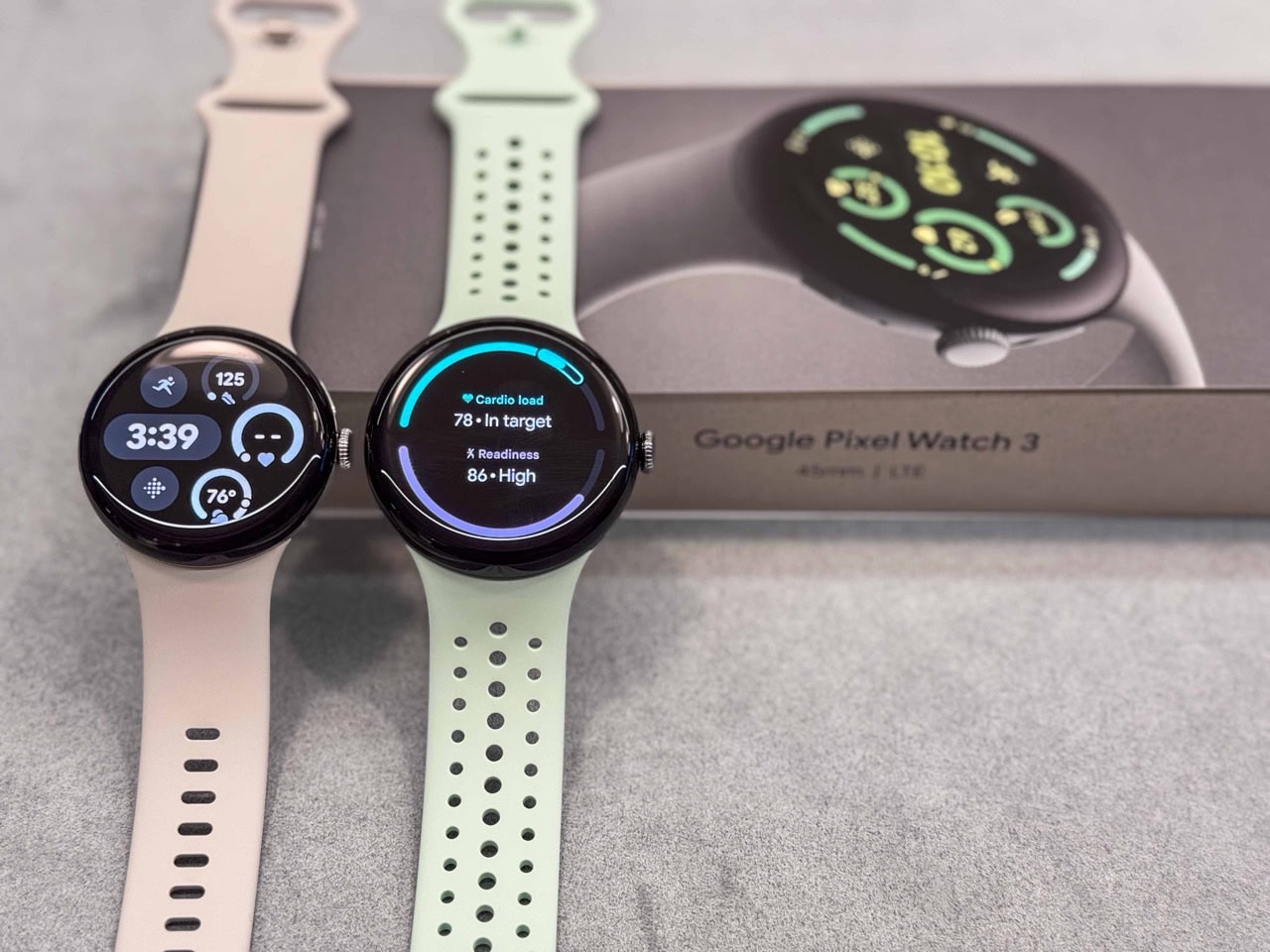
Dividing things up, let’s look at what’s new in hardware in software. Starting with the hardware bits, here’s what’s new:
– Adds 45mm size case (41mm display is 32.2mm across & 408px, 45mm display is 36.2mm across & 456px, previous 41mm was 30.48mm & 384px)
– Changed from AMOLED to AMOLED-LTPO, which adds/enables dynamic refresh rates
– Adds variable refresh rate from 1hz to 60hz
– Increased max brightness from 1,000 nits to 2,000 nits, decreased min brightness to 1 nit
– Increased battery life up to 36hrs in new battery saver mode (24hrs in always-on display mode)
– Increased/faster charging times by 20%, or 15 mins faster than before
– Made improvements/changes to dual-chipset architecture (one core for ambient compute, one for performance compute)
– 35% bigger batter in 45mm than the 41mm (but screen burns more, obviously, so times are essentially wash between units)
But the real changes are largely on the software side, so quickly looking into that before I get into the details down below:
– Upgraded to Wear OS 5 (the operating system/platform)
– Improved heart rate accuracy via algorithm, especially for running
– Added new automatic bedtime mode to detect if you fell asleep and lower power/battery burn
– Added new workout builder on both watch and revamped Fitbit app
– Added structured workout support on watch (including realtime guidance during run)
– Added media controls inside of the workout itself
– Added running efficiency metrics, including ground contact time, vertical oscillation, form analysis, cadence, and stride length
– Added support for all those efficiency metrics within Fitbit app on phone
– Added new running-focused dashboard in Fitbit Mobile app (tons of new analytics, very runner-focused, more down below)
– Added PR tracking (e.g. fastest 5KM/10KM/etc…)
– Added offline Google Maps support to watch
– Added new Cardio Load and Target load features (training load concepts see below, this is a huge line item)
– Revamped Daily Readiness Score concepts (more explained below)
– Daily Readiness Score is now available for all users, not just Fitbit Premium
– Added Morning Brief report on watch upon wakeup (akin to Morning Report/etc on other watches)
– Adding no-pulse emergency alerts and notifications (if it detects your pulse has stopped)
– Minor improvements in heart rate broadcasting compatibility (to 3rd party apps/devices)
– Added Google Nest Camera live view, including responding via Mic
– Added Google TV Remote (using watch as TV remote control)
– Added Pixel UWB phone unlock, and car unlock (from watch)
– Added ability to pickup and hold calls from watch (Pixel Phones)
– Added Find my Phone from watch (Pixel Phones)
– Added Pixel Recorder App (audio recorder) for phone
– Revamped Pixel Phone camera controls from watch
Now, there are some new Fitbit Premium items in here, though it’s notable that *EVERYTHING* listed above is totally free on the Pixel Watch. Instead, Fitbit is slowly shifting Fitbit Premium as before more of the advanced recommendations side of things, rather than in the past where it was restricting looking at basic historical data. I’ll dive more into this in the review, but based on my first look pieces, at Google, the additive pieces here are really more about suggested future things you could do, rather than restricting seeing your own data. In any event, a few new things on Fitbit Premium:
– Shifting to Google AI Gen9 models underneath
– Will now create daily run recommendations, including an LLM-generated description of the run
– Will use your Readiness Score and Training load metrics to drive those run recommendations
– Will leverage long-run preferences (specified in the watch) to schedule workouts
– Will determine your optimal target heart rates for each workout
Again, this section is a bit thin at this point, I’ll have more on this as I start seeing it in real-life longer term.
And finally, here’s the prices below, with all of these being on pre-order as of today, with availability September 10th.
– 41mm: $349 for WiFi, $399 for LTE edition
– 45mm: $449 for WiFi, $499 for LTE edition
And because I’ve got some photos, here’s some pictures of the boxes (which like many companies are now made fully of recycled materials, and also recyclable themselves with no plastic inside):

Ok, with that, let’s dive into the units.
A Bigger Watch:

This will be the shortest section, cause frankly, it’s just not that complicated: The watch is bigger.
Obviously though, it’s not super big. It’s “just” a 45mm watch, which is essentially on-par with other companies in the mainstream watch category, including Samsung (40/44mm), Garmin (41/45) and Apple (41/45mm). It is not however going to feel the same as something like an Apple/Samsung Watch Ultra or a larger Garmin 47/51mm watch. But the key thing for me wearing it for some time, including a run, is that it just felt ‘normal’. Whereas before, the 41mm Pixel Watch on my wrist felt “simply too small”. That’s now been rectified.

(The two sizes side by side, in two colors: 41mm and 45mm)
Thus with that size increase, Google has solved, by far, the single biggest complaint about the Pixel Watch. It’s simply no longer a factor in my thinking about the device. Of course, I think it’s also fair to say that the industry trend going forward from all these companies is offering a much bigger size/battery size watch, in that 47-52mm range. Obviously that’s not happening this year, and certainly Google isn’t going to say what’s going to happen next year, but I’d think given Google’s Pixel product lineup has always leaned more heavily on the tech-forward adopter, not having a larger sized watch for 2025 would probably be a big miss. But for this year, I’m just happy to see the 45mm mainstream offering.
In addition to being bigger, it also gives Google a bit more room in a handful of pages to add more data metrics, or icons, or more ‘stuff’ in a single view. Here’s an example of that:
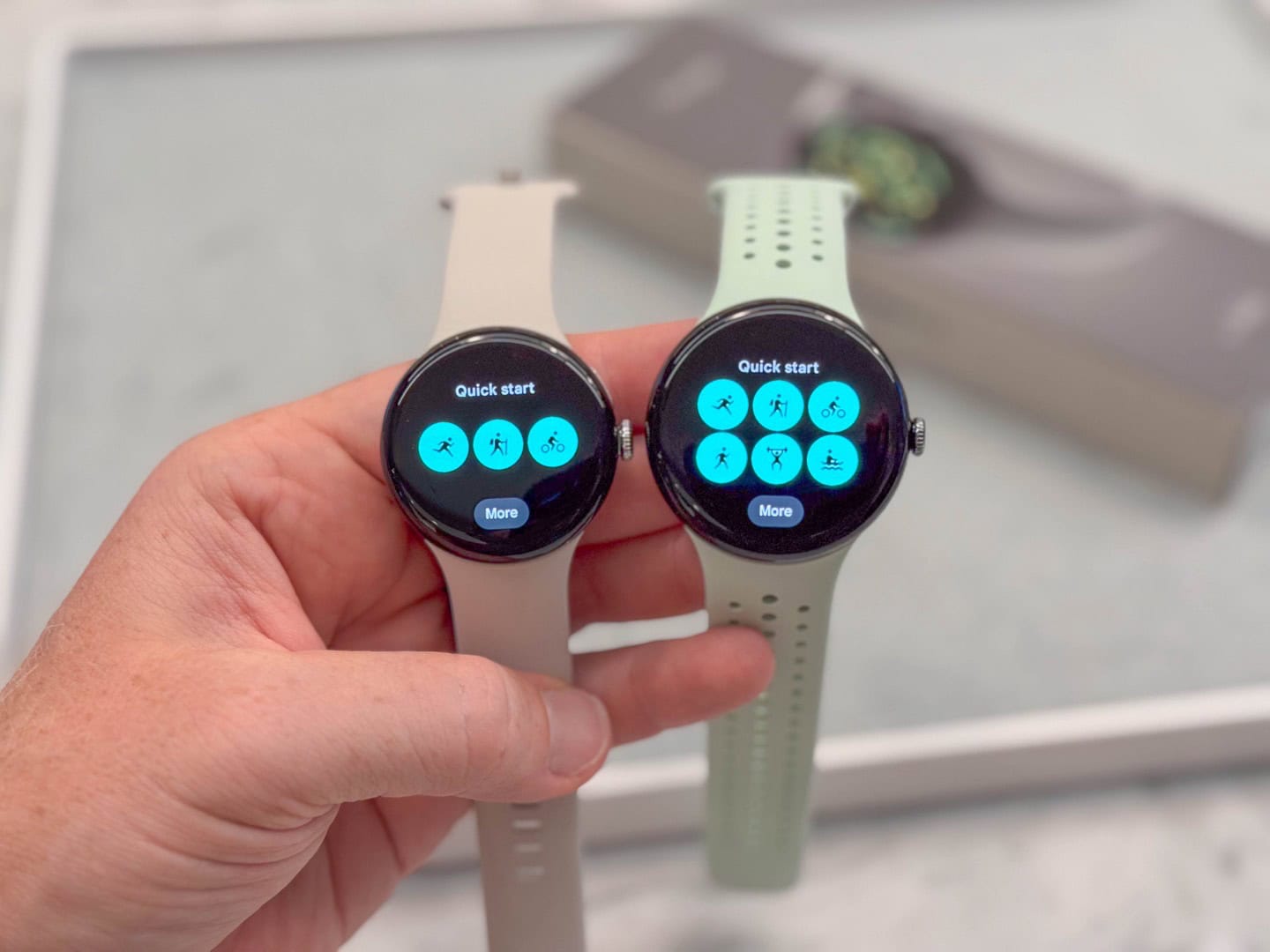
Now, one area to briefly touch-on is the new screen. This new screen is now twice as bright as before, going up to 2,000 nits, but now also goes down to 1-nit for the lowest level brightness (Google won’t say how low the lowest brightness level was previously). However, more important than that is the new AMOLED-LTPO screen which has a variable refresh rate, from 60Hz for smoother animations, down to 1Hz (once a second) for battery saving. Google says it’s this new screen that they’re seeing the biggest battery savings from.
Here’s a shot showing the slightly larger screen sizes of the 41mm compared to the Pixel Watch 2, and the 45mm.

(Left to right: Pixel Watch 2, Pixel Watch 3 (41mm), Pixel Watch 3 (45mm)
Additionally, they’ve added a new battery saver mode for up to 36hrs of battery. That new battery saver mode won’t impact any health metrics (which will still record at every-second), as well as will keep all safety components on. Instead, it’ll turn off the alway-on display and limit background calls. Gesture raise-to-wake remains on though.
Further, they’ve added a new ‘Auto Bedtime Mode’, which means if you fall asleep on the couch watching TV, it’ll kick into a lower power saving mode, while also going into bedtime mode. None of this changes how they do sleep tracking itself, but rather, is more about lowering power demands from the watch if you’ve fallen asleep.
Training Load & Readiness:

As noted above, I’d argue the biggest changes to the Pixel Watch 3 are the ones in software, not hardware. And while Google is focusing heavily on the change around running (both in terms of accuracy as well as running-specific features), I’m going to start with changes that are more broad, but still equally deep. This is a complete revamp of the Fitbit Daily Readiness features, as well as new training load features (called Cardio Load and Target load).
First up, there’s the new Readiness Score. I say ‘new’, because Fitbit has changed the Daily Readiness score to seemingly just be called ‘Readiness’, and with it, removed some components from the score. The removal of the components are less about removing them, and more about moving them into a different bucket. Also, notably, the new Readiness is now free for everyone, with no subscription required for anyone anymore (including all existing Pixel Watch users, and Fitbit users will also get a score update).
As for the Readiness Score, the new score now uses HRV, the past two weeks of sleep (with a weighted average built around a sleep reservoir concept), and your resting heart rate. It no longer takes into account previous day ‘activity’, whereas resting HR wasn’t previously part of it. The reason for the changes is they want the updated Readiness Score to be more about how you’re feeling generally, rather than athletically. That’s because the athletic side is now counted for in Cardio/Target load. Your Readiness Score is still on a 1-100 scale (with 100 being most ready).
Here you can see three very different days, and the factors that contributed to each day:
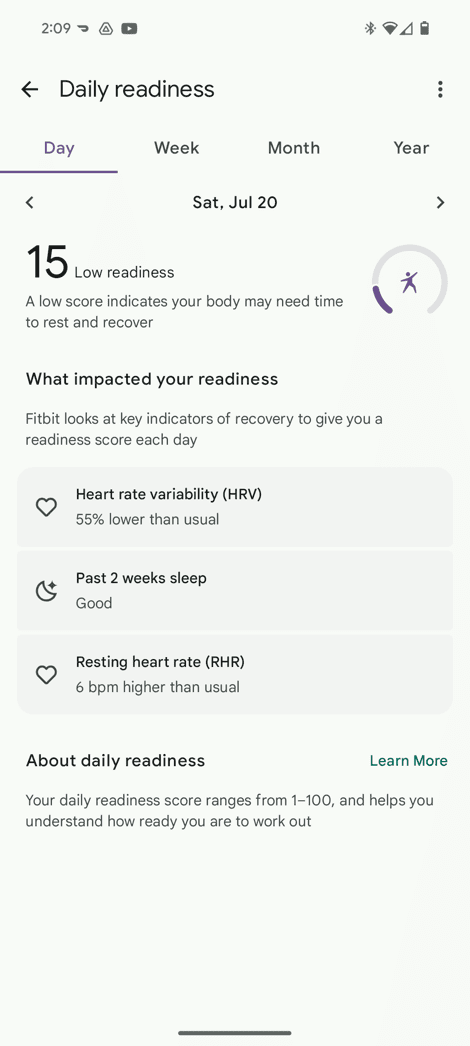
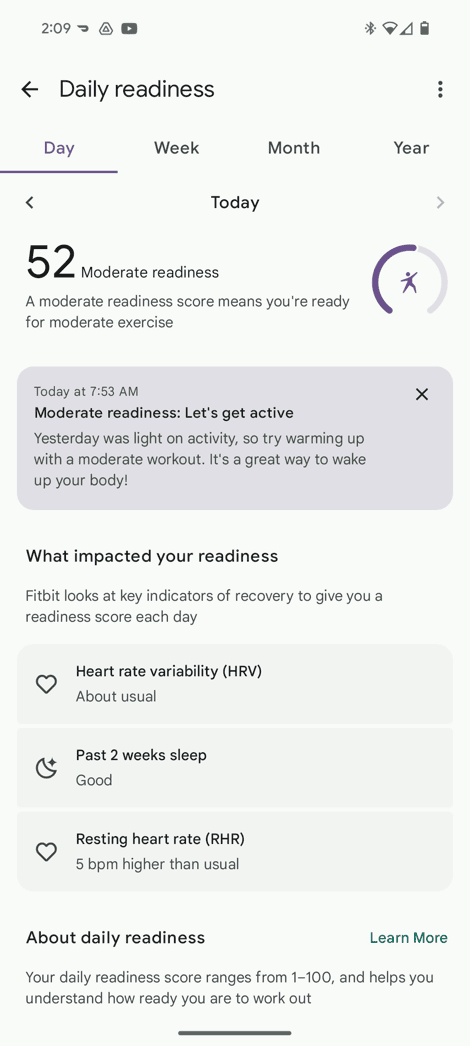
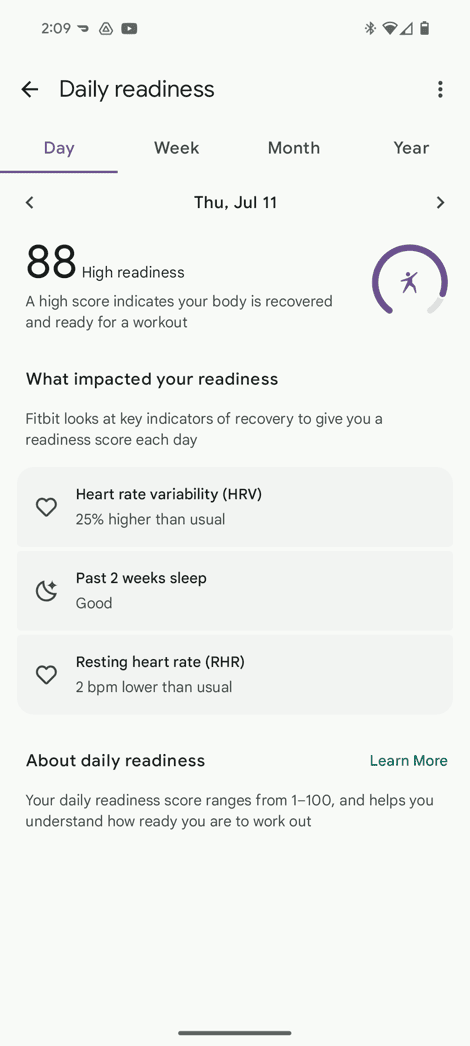
And you can also look at Daily Readiness levels over time too (another area their competitors should copy):

Next are the big new pieces: Cardio Load and Target Load.
Cardio Load is measuring workout intensity over time, specifically it’s looking at your 7-day cardio load versus your 28-day load. It takes into account heart-rate driven intensity and duration. However interestingly, it’s not limited to you starting a workout. It’ll capture a very busy day walking around the city (where you didn’t press start on a workout), and give credit for that (whereas virtually no other company does). It’ll then give you one of three color coded cardio load values, along with six different labels. Here’s an example of this showing the current cardio load at 142, along with the coloring as green and “Above Target”. The green color meaning that while it’s above target, it’s not crazy-high above to be concerning. You can trend this over time as well.
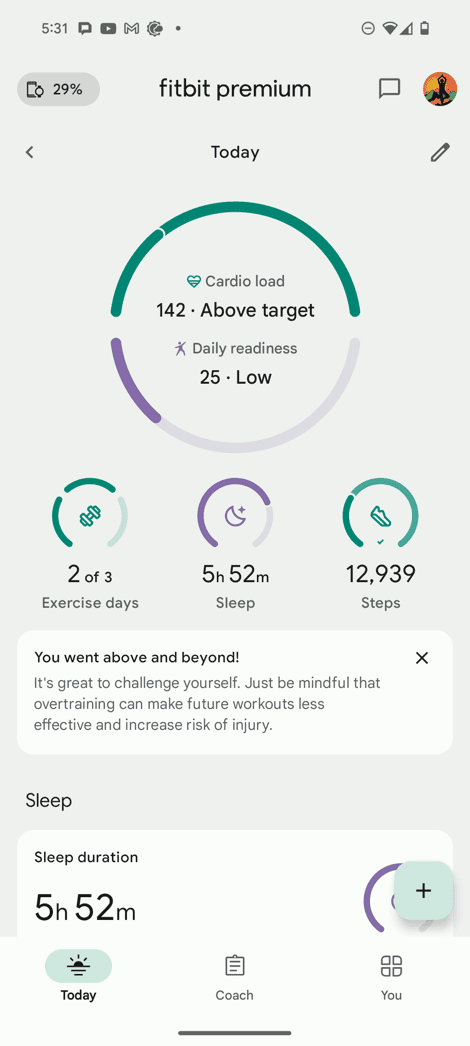
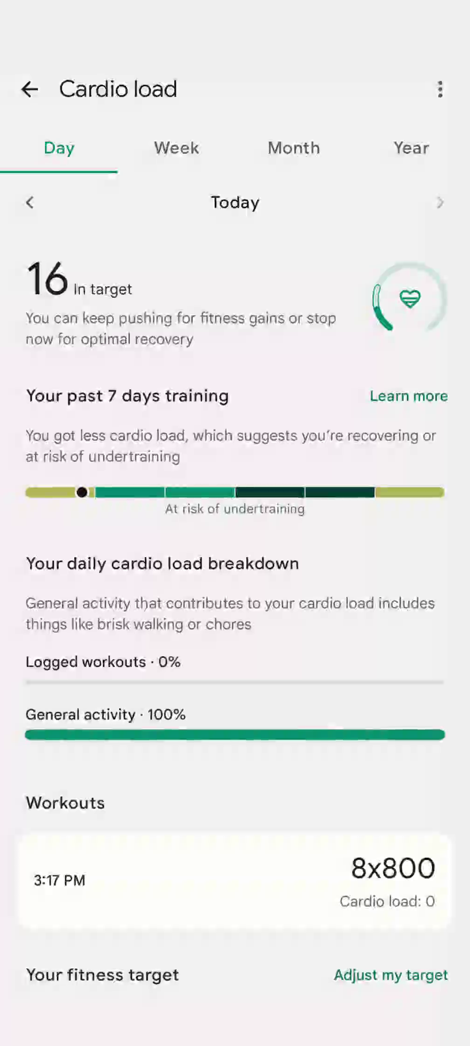

And one more showing how that trends over time:
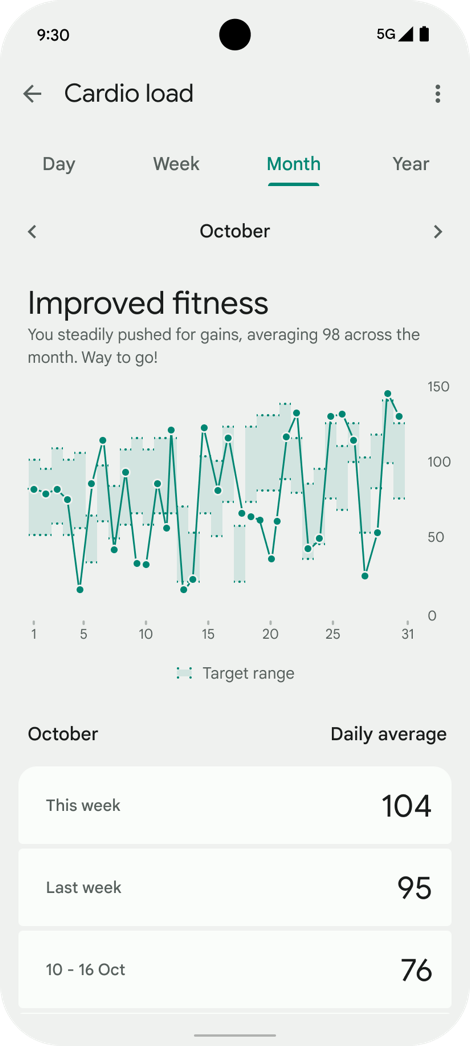
And here’s how that’d look on the watch, within that tile:
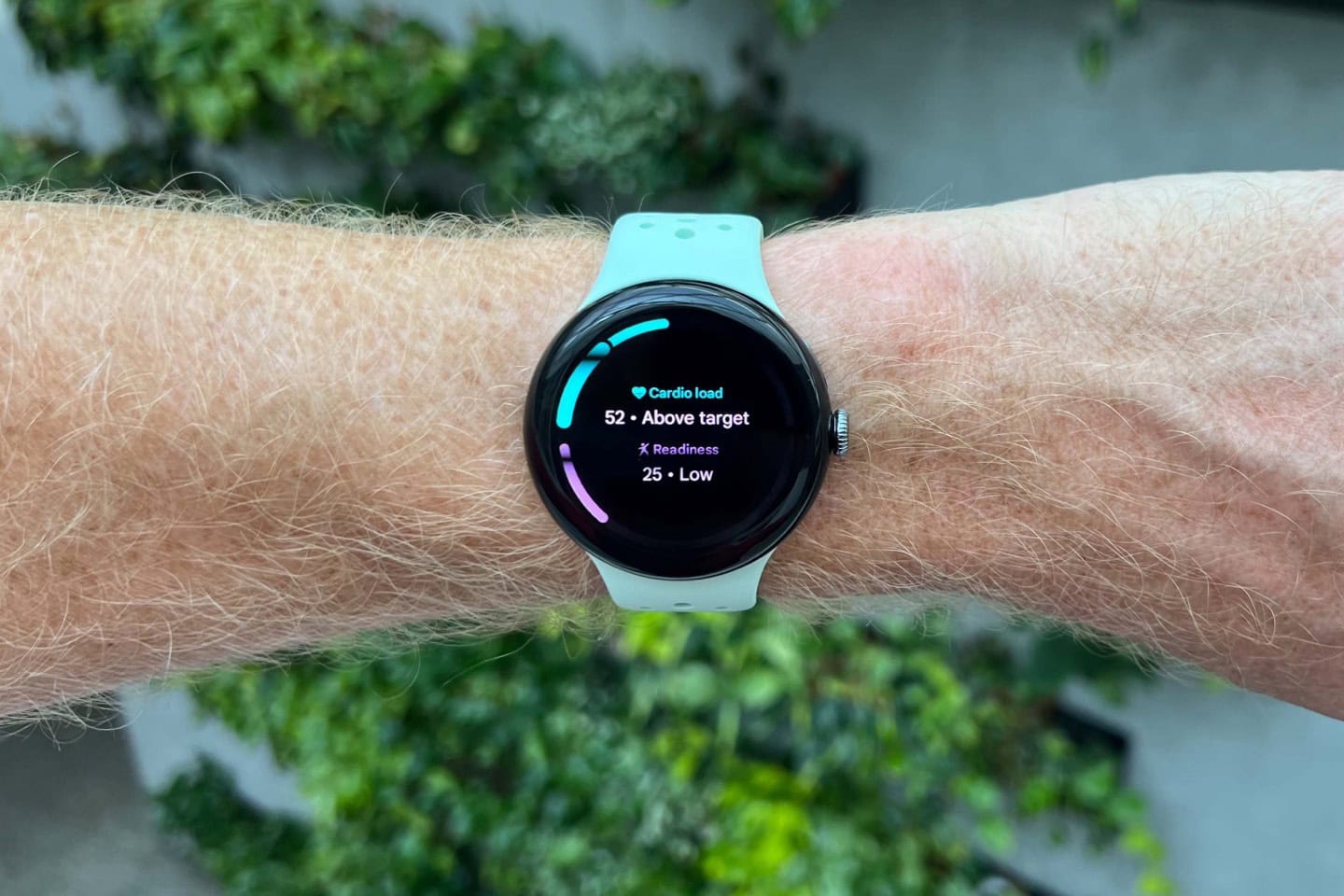
Next then is Target Load. This requires 14-days of calibration, and 7 nights of sleep. As always, the data will get better the longer that period, up to the 28-day historical load range. Target Load is telling you how much your body is ready to take on that day, based on your historical data.
Critically though, you can specify whether you want to ‘Maintain’ or ‘Improve’ your current load levels. In other words, unlike every other watch that just assumes you want to forever-increase, Google actually is the only company that gives you the option to decide whether you want to simply maintain (such as in the off-season), or want to improve fitness (such as leading up to an event). This is actually a really big deal that could be easily overlooked/missed.
The target load for each day is given as a range, and you can see this in a few places, but perhaps my favorite is actually showing how you score each day against your Cardio Load:
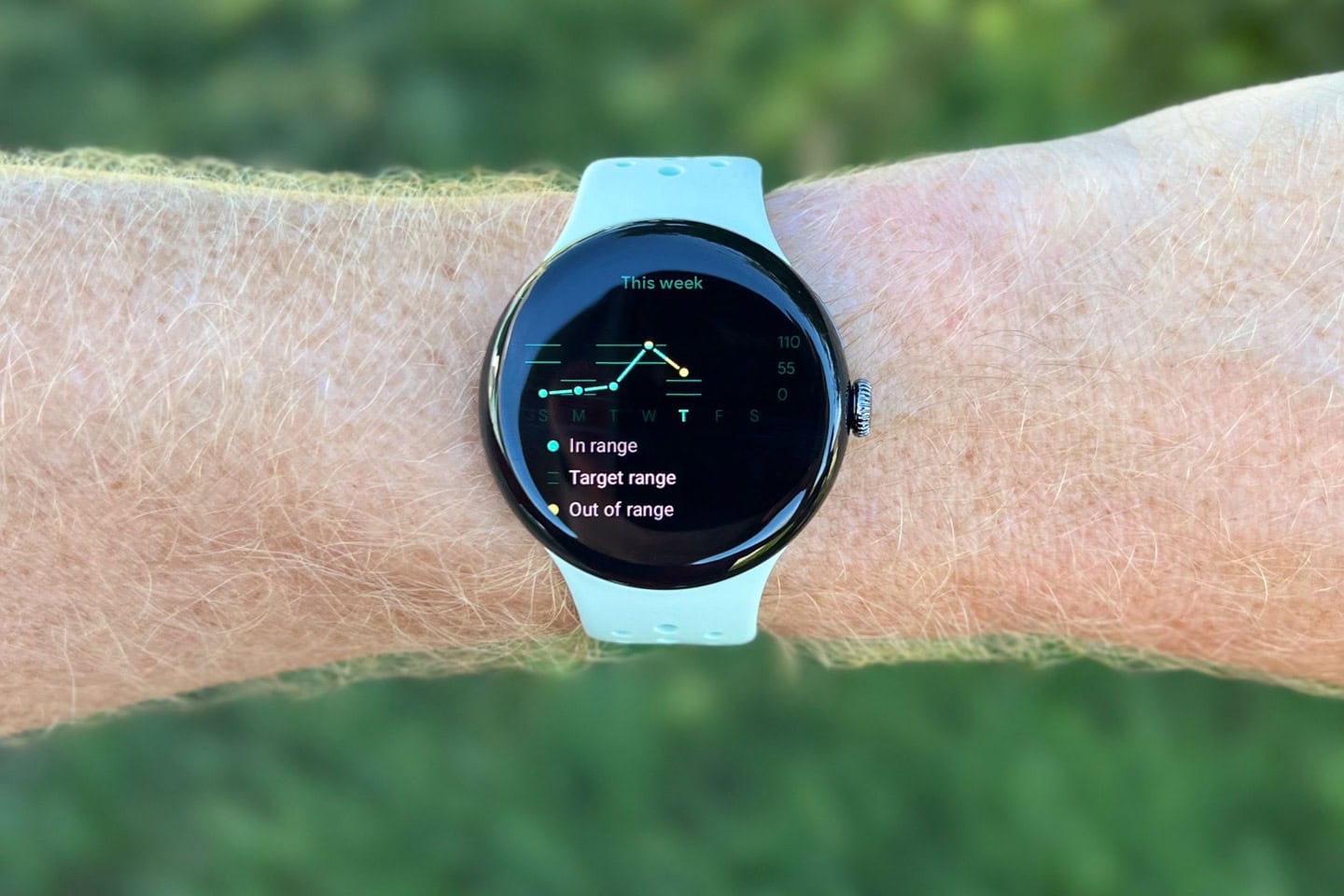
You can display these metrics in a number of places. Google has a full tile on the watch (as seen above), as well as a Cardio Load complication available for watch faces. Further, there’s a huge slate of details within the app.
As with most other endurance sports watches, you’ll see the exact numbers above/below your load levels, as well as your trend information. As I said in my recent first look at Apple’s Training Load beta for WatchOS11, you really need those numbers to add scale. Google/Fitbit seems to have found a way deliver training load that doesn’t become overly complex like many endurance sorts watches, but concurrently, doesn’t become a bit too washed-over like WatchOS10 (look Apple, you’ve still got a month or so to add some labels to those charts, making many of us instantly happy).
Overall, I’m really impressed with Google’s first go at this. It’s much better than I expected, and again, seems to thread the needle very well between overly complex, versus too fuzzy. Good job.
Oh, one last thing in this category, is the new ‘Morning Brief’ page, which appears when you wake-up each morning, akin to morning report on other devices. This will show your HRV values from the night prior, your Readiness Score, your Target Load for the day, sleep, weather, and more.
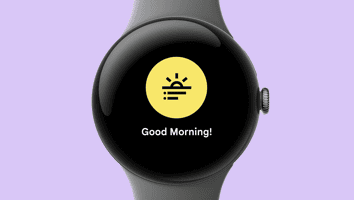



Further, if there’s any of your overnight metrics that have a warning, it’ll notify you here. This includes HRV, SpO2, Breathing Rate, Skin Temperature, and Resting Heart Rate.
Running Features Expansion:
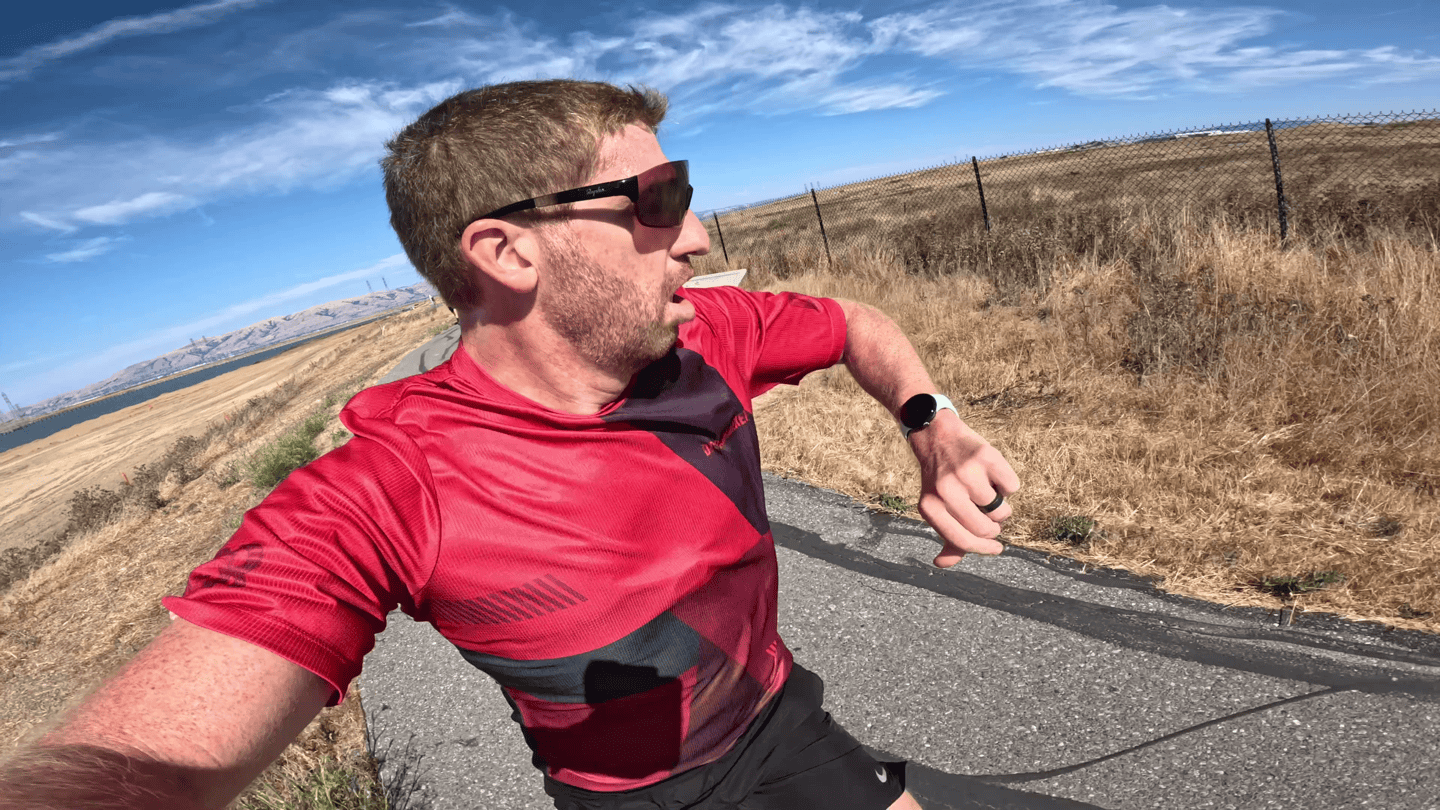
Next up, we’ve got a slate of new running-related features. In short, these are:
– Added creation of structured workouts on both app and watch
– Added real-time guidance of run structured workouts
– Added advanced running metrics (e.g. ground contact time, vertical oscillation/etc…)
– Added running form analysis
– Added new ‘Run’ Dashboard/section within Fitbit app
– Added tracking of personal running records (e.g. fastest 5KM/etc..)
– Added daily suggested running workouts (with Fitbit Premium) to watch
– Revamped the living crap out of the Fitbit app to make it actually useful for athletes
So starting off on the structured workout side, you can now build structured workouts, with specific targets in the Fitbit App, as well as on the watch itself. These workouts can have specified warm-up/cooldown sections, as well as various targets and repeat intervals. You can get reasonably complex here, and you can pretty easily create the common targets you’d want for most structured running workouts I can think of wanting to suffer through. And hopefully, you can do this on both app or watch.
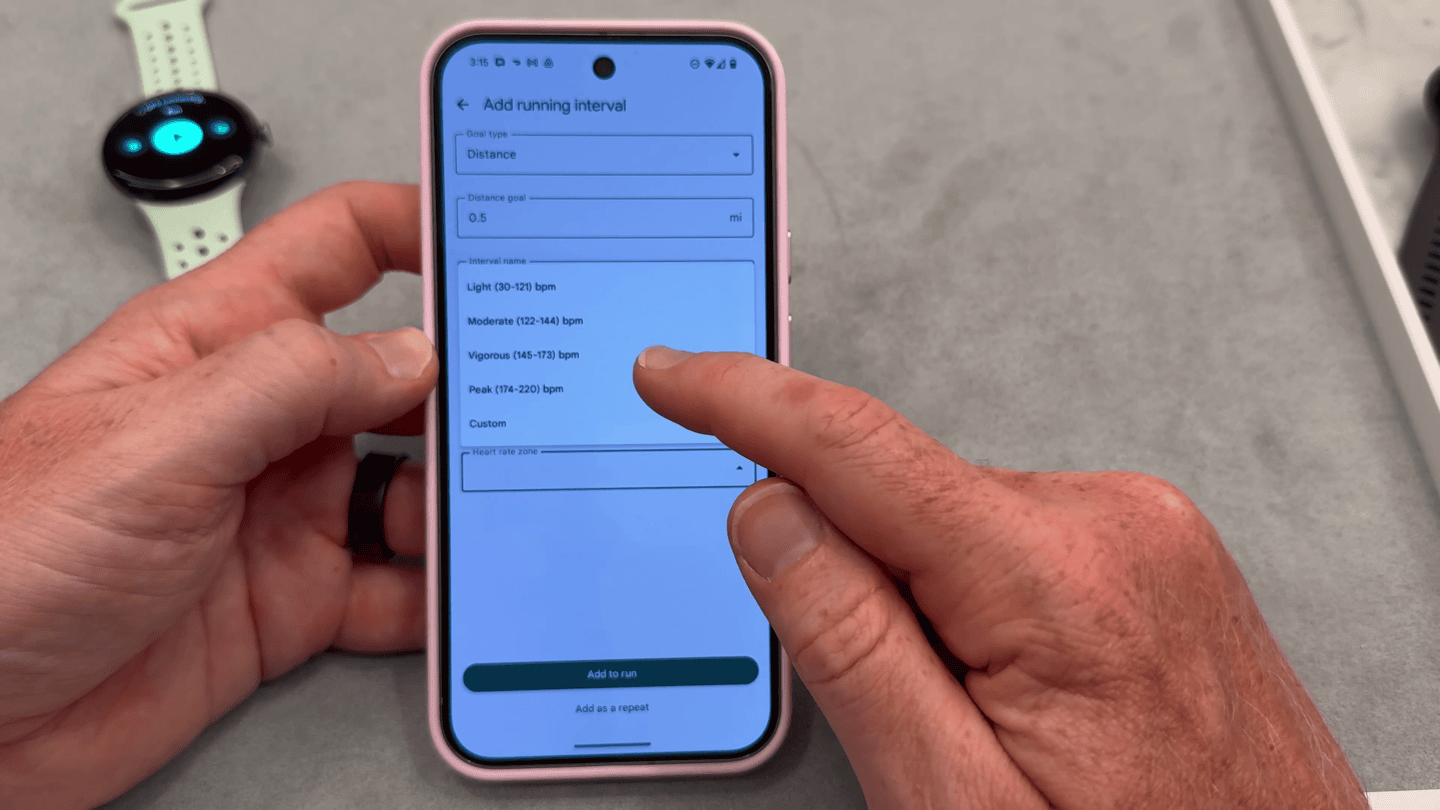
If you created it on the app, it instantly shows up on the watch (literally, like 1 second later in my hands-on time). And you can have multiple structured workouts available on the watch.

Once you select the workout, you can go out and execute it. It’ll automatically iterate through each step of the workout, showing you the exact targets for each piece and giving you a quick countdown into each segment. For the most part, this is all basically the same as most other companies. But it worked perfectly for the single hands-on structured workout I did:
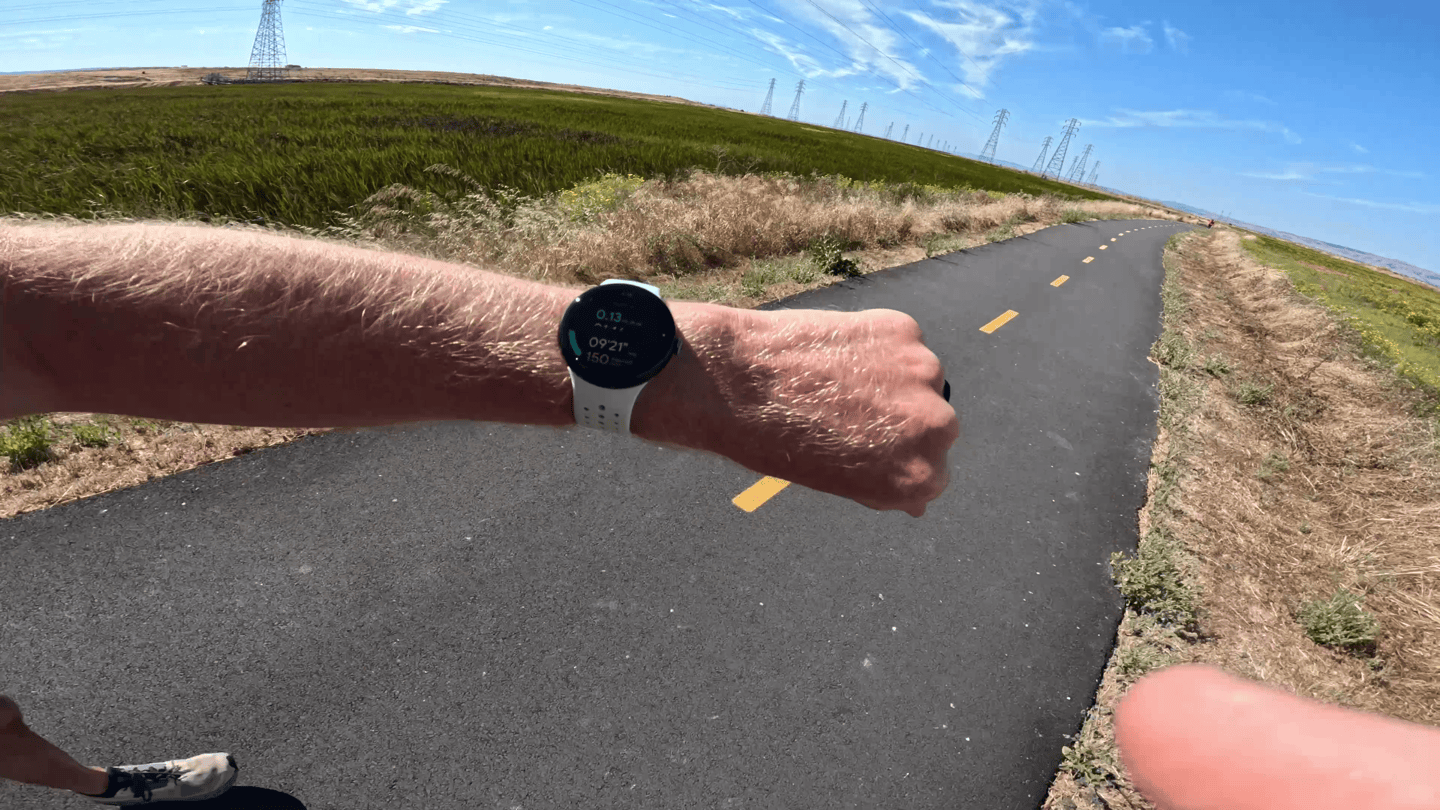
Of course, the above photo mid-run isn’t super helpful, so here’s what it looks like otherwise:
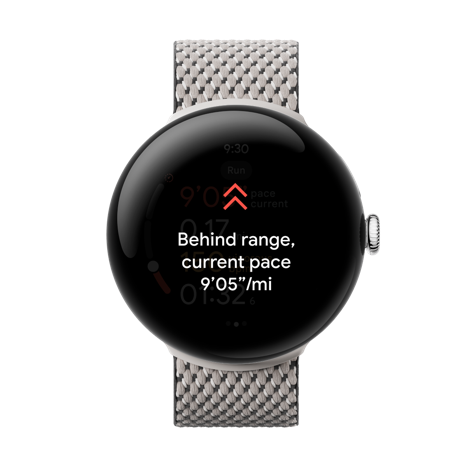
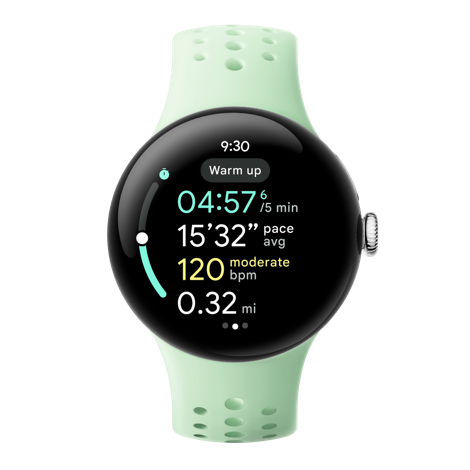
Note again, this isn’t a review. It’s just an initial first-look at things. A full review will come around the same time as the watch releases to the public on September 10th.
Also of note is that at this point, there isn’t any sort of tie-in to other structured workout platforms, like TrainingPeaks. We saw Apple add that last year, bringing them closer to endurance sports companies. When I asked Google about this, it definitely wasn’t off the table, instead opting for “new news to share on that today”, which is what they usually say when they aren’t quite ready to talk about something that didn’t make the cut for release day announcements.
Now post-run, you’ll get a slate of stats on the watch, but also more importantly in the Fitbit app. On the watch for example, you can see each portion of my structured workout, and the average pace/HR for that portion:

As I alluded to above, there’s been a *MASSIVE* refresh of this app. It’s hard to overstate how big a change this is. Previously, the Fitbit app has always been targeted towards its core audience of daily step/activity/wellness tracking. It felt watered down and constrained by that goal. But now, it’s full of useful running stats/metrics. Is it the depth of Garmin? No, but it’s pretty darn useful now. Here’s some initial stats from my run (more down below further). Note the Cardio Load listed on the left panel.

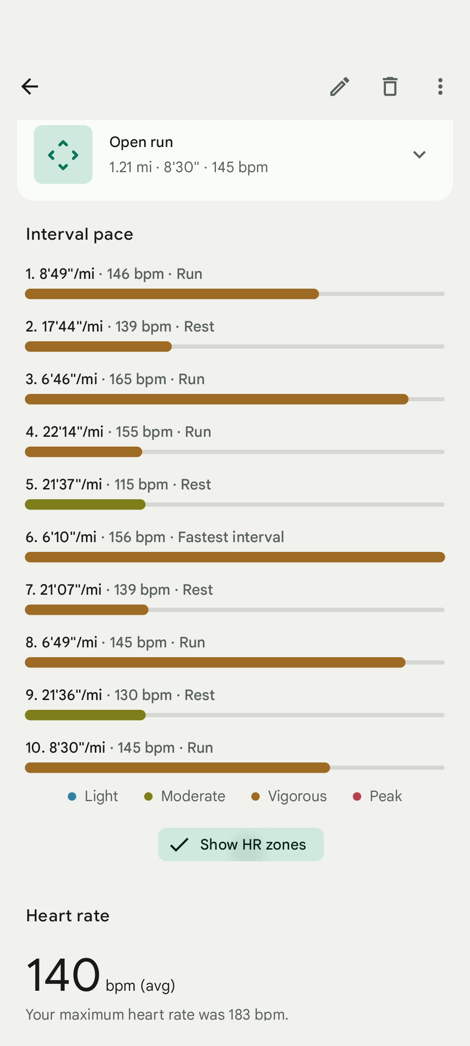
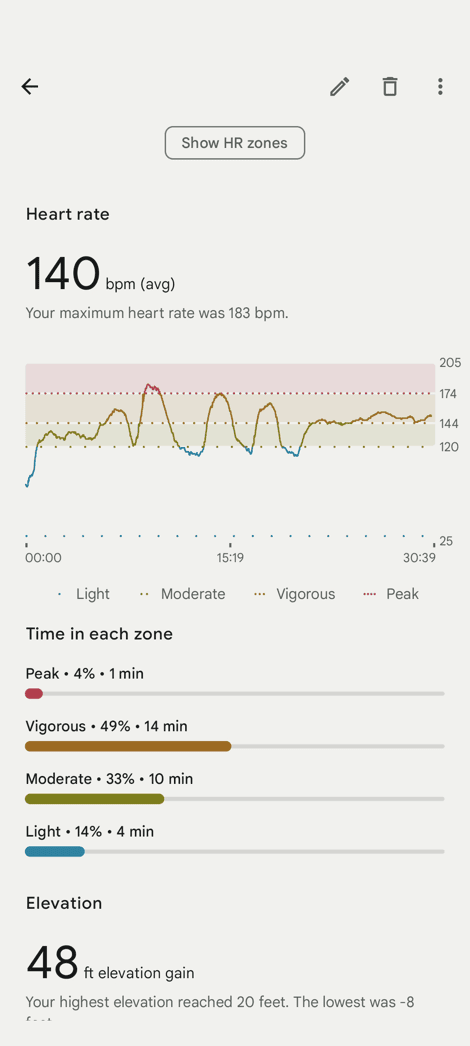
Which brings us to that refreshed running dashboard. Here you can slice and dice runs across various longer durations including weekly, monthly, 3-moths, yearly, etc… I show it a bit more during the video, as it’s really more about the sorting/filtering flexibility as you dive into each metric.

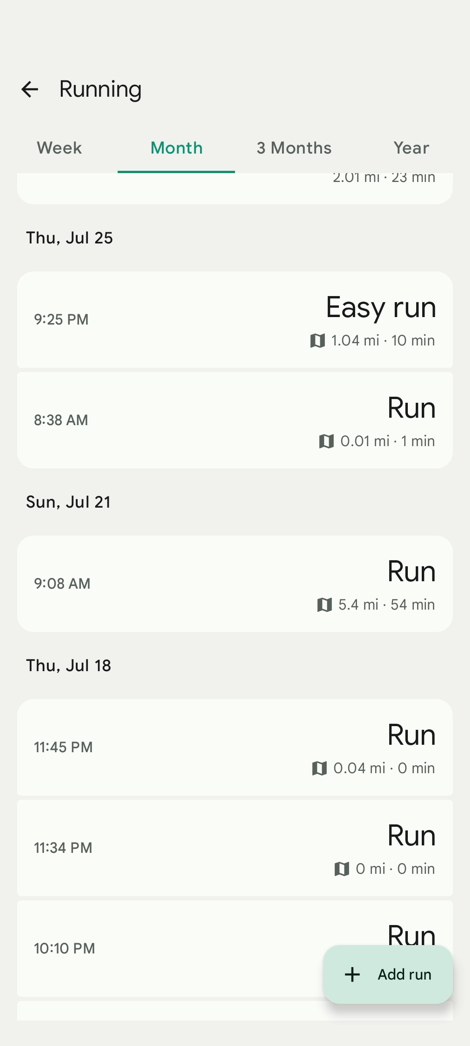
And in that entire bundle of things, you may have noticed those new advanced running metrics. Specifically Ground Contact Time, Vertical Oscillation, Stride Length, and Cadence. You can see these within on the watch post-run (but not within a run):
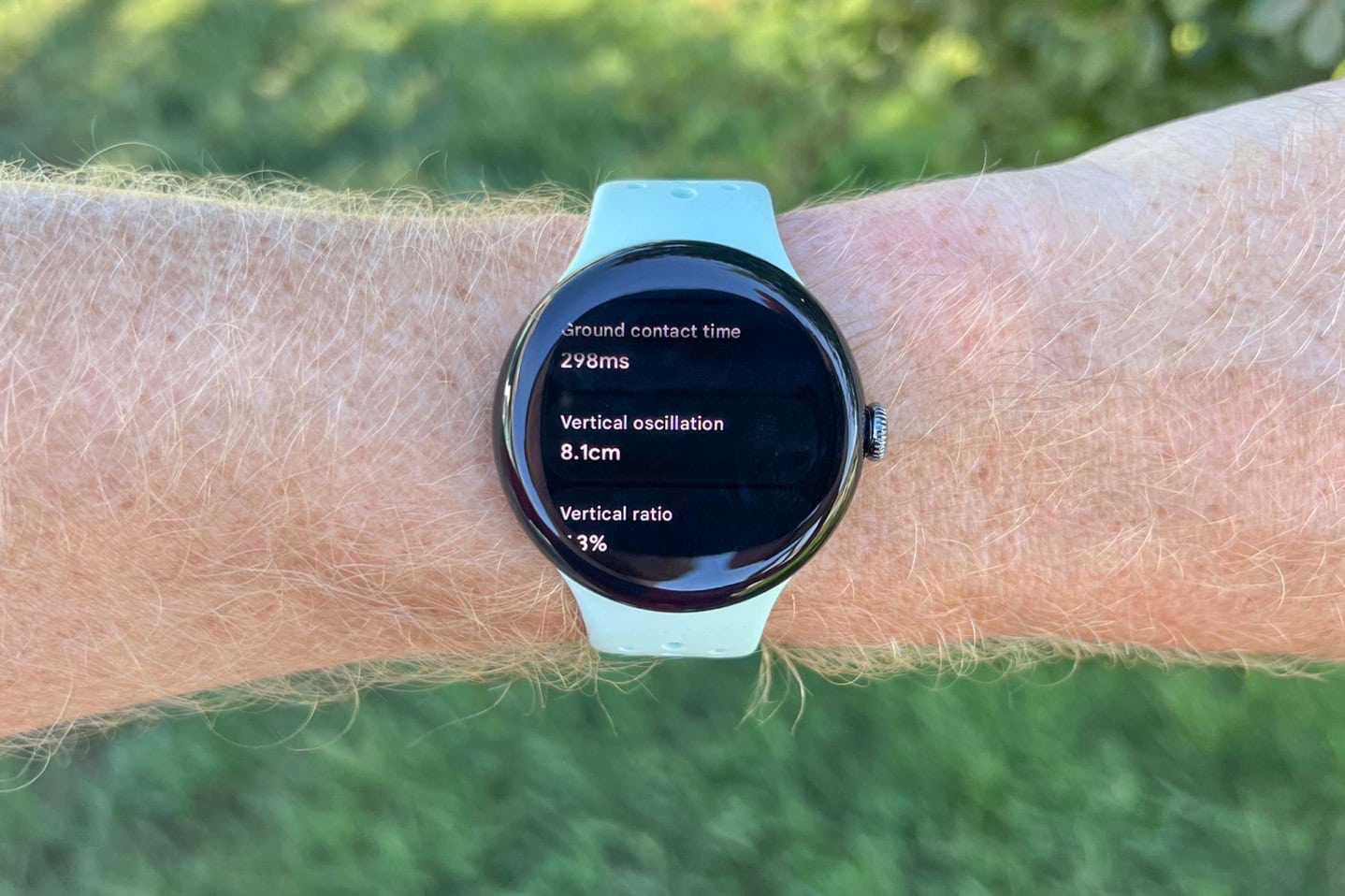
And then far more details in the Fitbit App afterwards, as well as do some kinda-basic analysis of them:
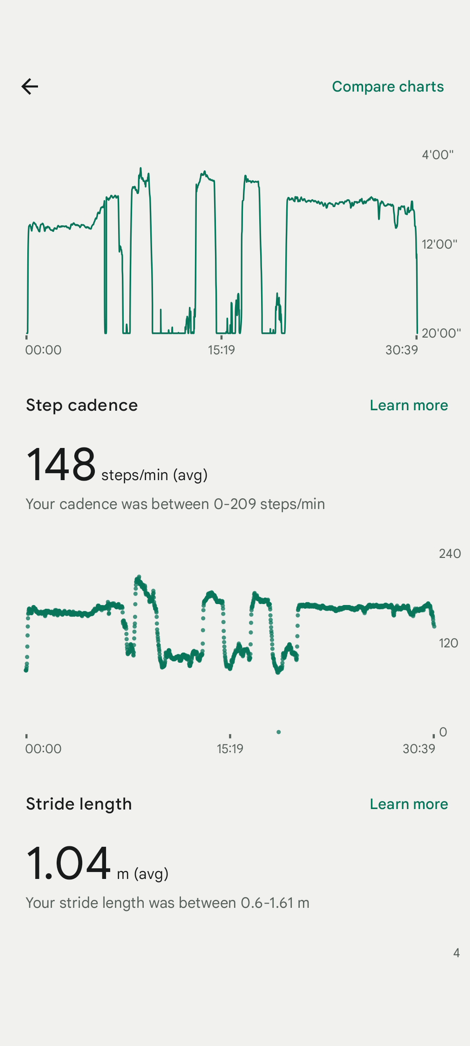

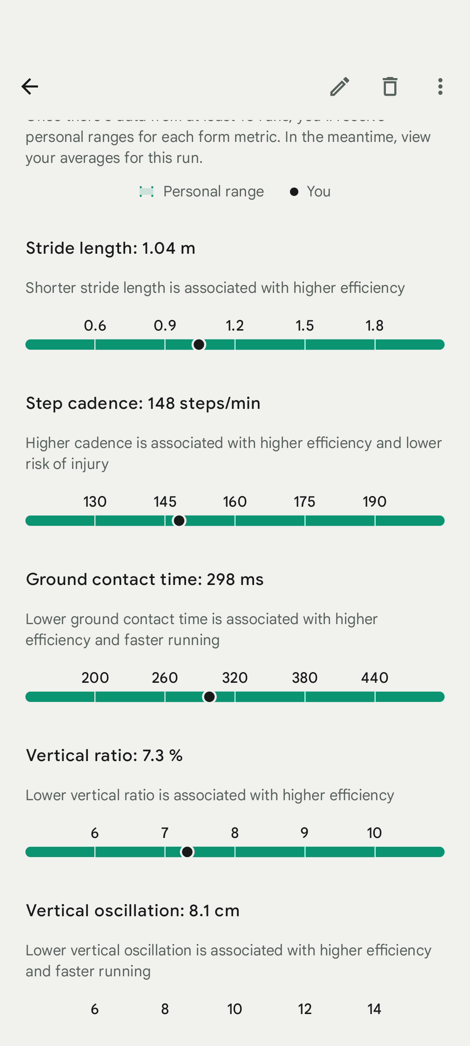
And you can overlay/compare metrics, as well as trend things over longer periods of time (note below right, the ‘Ground Contact Time’ option is checked, to show how that changes over a 3-month period).
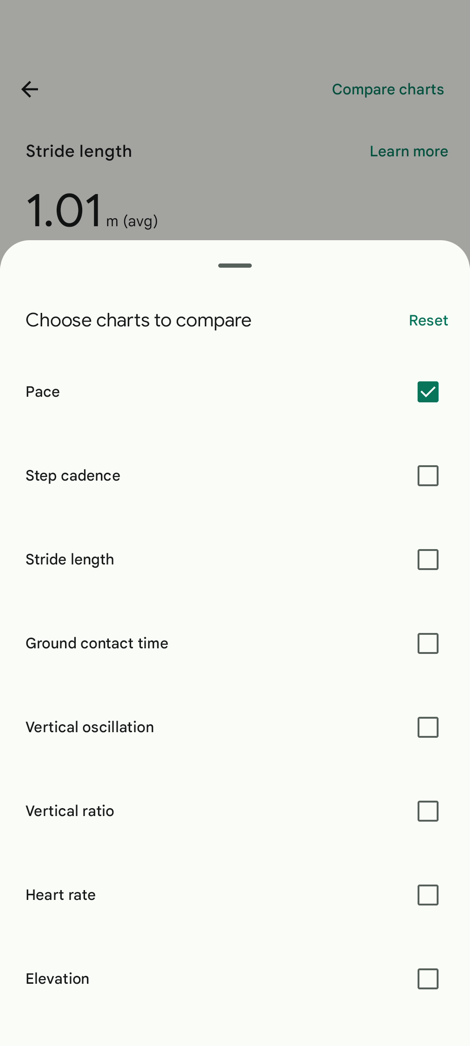
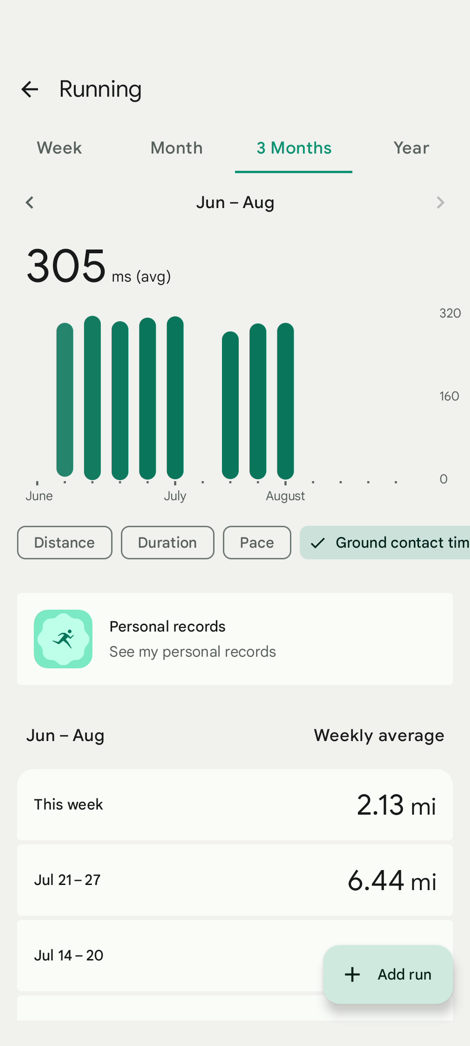
If you’ve got Fitbit Premium, it’ll also give you a bit more insights, saying things like “Runs over the last week have a 15% higher cadence”.
Fitbit gave me a tour of their lab where they validated all of these metrics using sensor plates, a huge array of cameras, and more. I’ll dive into that in my full review, as well as comparisons to other companies data. Though, I’ll point out that my comparison efforts will be somewhat limited in that Google isn’t exporting any of this data to open-file standards (or exporting it at all). Thus, no matter how much they’ve invested in ensuring the accuracy, I don’t really have a good way of demonstrating or validating that myself.
On the flip-side, one thing that will be easy to validate, is Google’s new claims of being their “most accurate heart rate for running” watch to date. While the company says the sensor is almost identical to before, the majority of the changes are coming from algorithm updates. And these updates are coming to both Pixel Watch 1 and Pixel Watch 2 owners.

Again, this is an area I’ll dive into during my in-depth review down the road, looking at both the heart rate accuracy in running, as well as various changes they’ve made around GPS/GNSS accuracy. Notably, the Pixel Watch 3 doesn’t include dual-frequency/multiband GPS/GNSS. However, as I’ve constantly said: I don’t care how a company arrives hardware-wise at an accurate GPS track, as long as they do so. We’ve seen companies with multiband implementations do worse than other companies without multiband. So as long as Google can deliver accurate GPS tracks, I’m happy. Again, things for the full review.
Wrap-Up:
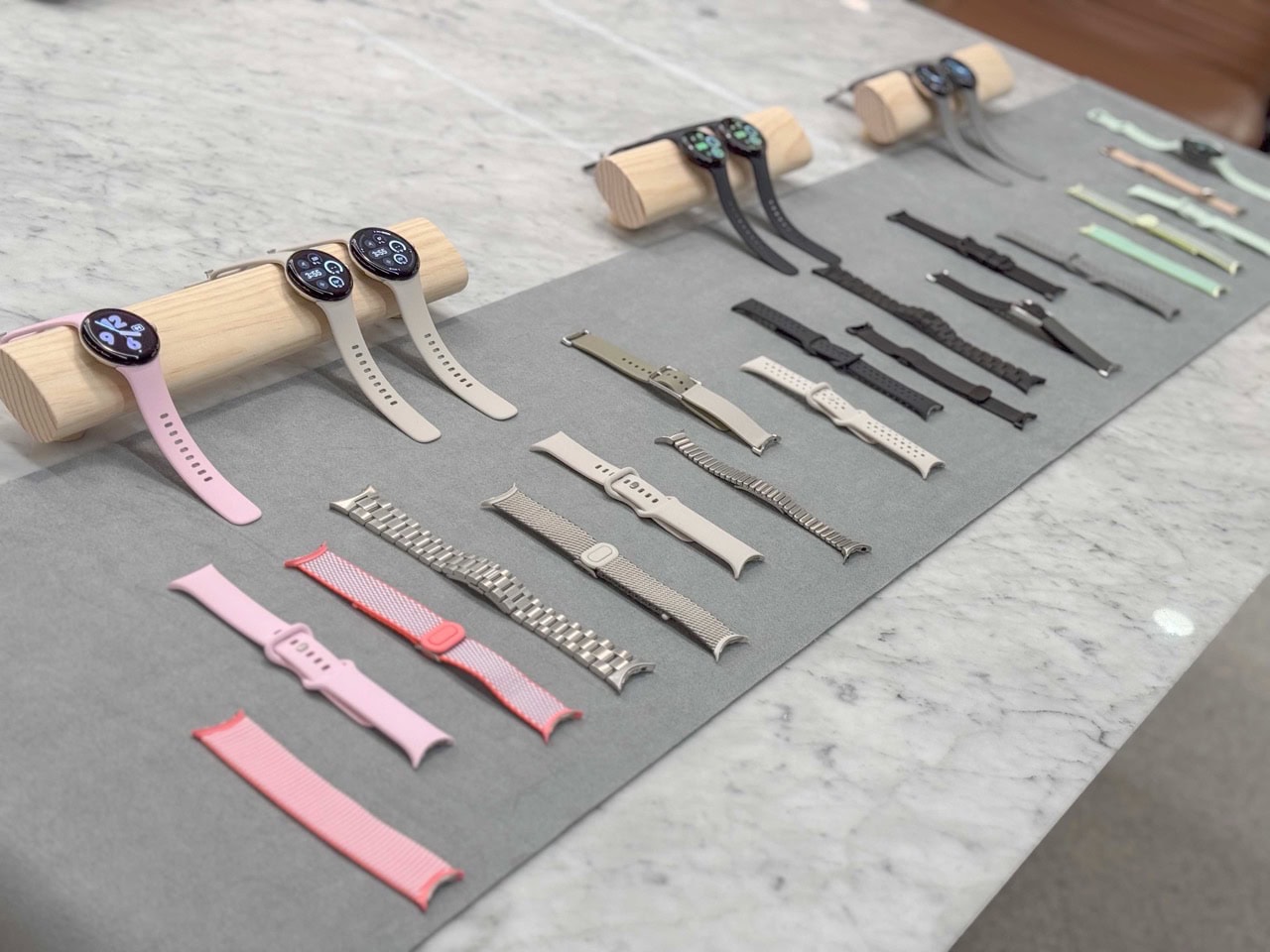
Ultimately, Google has made a gigantic step forward here. Sure, most importantly, they delivered on a larger sized watch more inline with much of the male population (while also keeping the smaller sized). But beyond that, they’ve delivered on the groundwork for a huge slate of fitness and sports features. They’re adding in key (free) things that make it compete quite directly with not just Apple/Garmin/etc, but also with the likes of Whoop and Oura.
Redefining the already solid Daily Readiness and adding the Cardio Load/Cardio Target is very much an affront to paid subscription services like Whoop that have become popular in recent years. Except that Google’s optical HR sensor has historically been quite strong, so assuming my testing of the Pixel Watch 3 comes in with at least that level accuracy, that’ll give them a solid step-up over some of those other workout-focused platforms.
Which isn’t to say there aren’t some obvious gaps. For a sport-focused device with training load-type metrics, the lack of integration with platforms like Training Peaks is a notable gap. It seems like that might be on the horizon, but hopefully it’s something they can make move a bit faster. And then certainly as we move towards 2025 and beyond, I think Google has to add a larger watch akin to the 49-51mm watches of Apple/Garmin/Samsung, which have become popular not just for their size, but larger battery life. But hey, let’s not get ahead of ourselves.
First, there will be testing of the Pixel Watch 3 for a proper in-depth review, thus, stay tuned for that in early September.
With that – thanks for reading!
Found This Post Useful? Support The Site!
At the end of the day, I’m an athlete just like you looking for the most detail possible on a new purchase. These posts generally take a lot of time to put together, so if you’re shopping for the Google Pixel Watch 3 (45mm) or any other accessory items, please consider using the affiliate links below! As an Amazon Associate I earn from qualifying purchases. It doesn’t cost you anything extra, but your purchases help support this website a lot. Even more, if you shop with TPC (The Pro’s Closet), you’ll save $40 on purchases over $200 with coupon code DCRAIN40! The Pro’s Closet has been a long-time partner of the site here – including sponsoring videos like my cargo bike race, as well as just being an awesome Colorado-based company full of good humans. Check them out with the links below and the DCRAIN40 coupon!
And of course – you can always sign-up to be a DCR Supporter! That gets you an ad-free DCR, access to the DCR Quarantine Corner video series packed with behind the scenes tidbits…and it also makes you awesome. And being awesome is what it’s all about!
